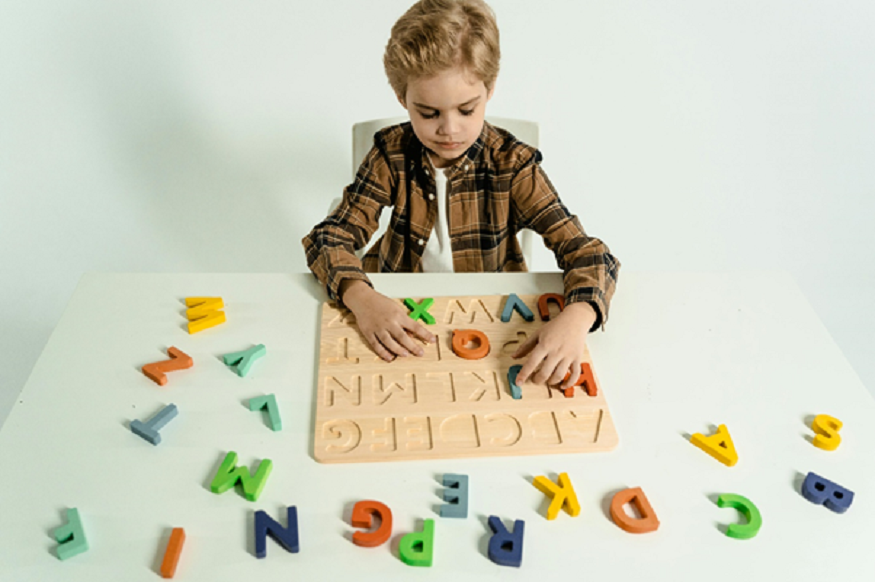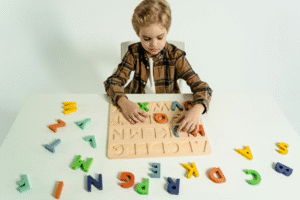When Words Aren’t Enough: How Sand Tray Therapy Helps Children Express Feelings

For many individuals—especially those who struggle to verbalise their feelings—traditional talk therapy may feel limited, inaccessible, or even intimidating. Enter Sand Tray Therapy: a powerful, hands-on, creative tool that invites self-expression through tactile and symbolic play. Whether in a clinical context, at home with a parent guiding a child, or within a school setting with educators and counsellors, sand tray work offers a bridge between inner worlds and external expression. Read on to explore what sand tray therapy is, how it works, who it benefits, and how it can be integrated into therapeutic ecosystems—including schools and specialist support programmes.
What is Sand Tray Therapy
Sand tray therapy (also called sandplay or sand-tray work) uses a shallow tray filled with sand and a collection of miniature objects—figures of people, animals, buildings, nature elements, vehicles, abstract symbols—through which clients build a “world” or a scene that reflects their inner experience. The process invites non-verbal expression: the person engages with sand and miniatures, creates representations of their feelings, relationships, memories, or conflicts, then may talk (or may not) about the world they have built. In a sense, it’s a symbolic externalisation of internal experience.
Because sand tray therapy engages the senses, the tactile, the visual, and the symbolic, it offers unique advantages for clients who may struggle with verbal therapy.
How Does It Work
Here’s how sand therapy transforms emotions into visuals through a hands-on, symbolic process:
. Setting the Scene
The therapist prepares a quiet, safe environment: a tray (often with a blue-painted interior representing water or sky), fine sand, and a broad collection of miniatures organised for easy access.
The client is invited to create a scene in the sand: there are no strict rules, little directive input. They choose figures, place them in the sand, perhaps build landscapes, manipulate sand, and shift elements.
. Creation and Expression
As the client works, the therapist observes, offering minimal intervention—a question now and then, like “What stands out to you?” or “What do you notice happening in your scene?”
Since sand tray therapy falls under expressive therapy techniques, the act of creation itself becomes expression. According to experts, the non-verbal, sensorimotor experience helps tap into subconscious themes: feelings, conflicts, imagery that may not surface in talk therapy.
. Reflection and Meaning-Making
After creation, the reflection phase begins. The client may describe their scene, and the therapist may facilitate exploration of symbols, placement, and the relationship between elements.
The key is collaborative meaning-making: the therapist doesn’t impose interpretation but supports the client to make sense of their own world.
. Integration and Healing
What emerges from sand tray therapy is a greater self-awareness, a chance to externalise internal dynamics, to re-see them, reorganise them. This process allows for emotional regulation, narrative reconstruction, problem visualisation, and solution exploration.
As many practitioners note, the tactile experience helps to ground emotion, and the symbolic world can feel safer to explore than raw memory.
Who Can Benefit
Take a look at how Sand Tray Therapy uses touch, symbolism, and creativity to reveal emotions and promote deep psychological healing:
. Children and Adolescents
For children, especially those who struggle with language, communication, or emotional regulation, sand tray therapy can feel like “play” while doing deep work. It can be integrated into school settings: counsellors or PSHE specialists may use it to help pupils articulate feelings about transitions, friendship dynamics, trauma, or anxiety. The playful nature reduces resistance.
. Adults and Trauma Work
Adults benefit too. Trauma survivors, individuals processing life changes, or people stuck in talk therapy loops may find sand tray work refreshing. The non-verbal route bypasses the often difficult access to words and invites symbolic restructuring.
. Families, Couples, and Groups
In a family or group context, sand tray scenes can be co-constructed or created side by side, offering rich insights into relational dynamics, roles, and conflicts. In schools, group versions may be used (with caution and adaptation) to allow peer reflection or collective narrative building.
. Schools and Educational Settings
Schools are increasingly adopting therapeutic methods alongside academics, with sand tray therapy becoming a key well-being tool for emotional and social support. When paired with Autism Courses, it helps educators create inclusive, sensory-friendly spaces that reflect diverse learner experiences.
Why Sand Tray Therapy Works
Here are key benefits that make sand tray therapy such a compelling tool:
. Non-Verbal Expression
For clients who struggle to articulate verbally, the choice of figures and creation of a scene provides a concrete way to externalise feelings, memories, and dynamics.
. Symbolic and Sensory
The tactile interaction with sand, miniatures, and the creative flow tap into embodied, non-linear parts of experience—enabling integration of mind, body, and emotion.
. Safe Emotional Distance
The sand tray allows representation of conflict, trauma, and relationships in a symbolic space that is safer and feels more controllable.
. Complex Meaning-Making
The construction invites layered narratives—clients can build beginning-middle-end scenes, explore dynamics, revisioning, and alternative endings.
. Engagement and Motivation
Especially in children and teens, using hands, objects, and a “mini-world” is engaging; it often lowers resistance compared to purely verbal therapies.
. Flexibility
The method can integrate with other modalities—talk therapy, art therapy, family therapy—and can be adapted across ages and settings.
Bottom Line
Whether you’re a school counsellor integrating innovative approaches into well-being programmes, a parent supporting your child’s emotional world, or a therapist expanding your toolkit, sand tray work offers profound potential. In a landscape where structured qualifications and specialist training matter more than ever, professionals engaged with Online Autism Courses for Teachers will find sand tray therapy a valuable complement to their strategy, enabling deeper connection, richer support, and inclusive creativity.





